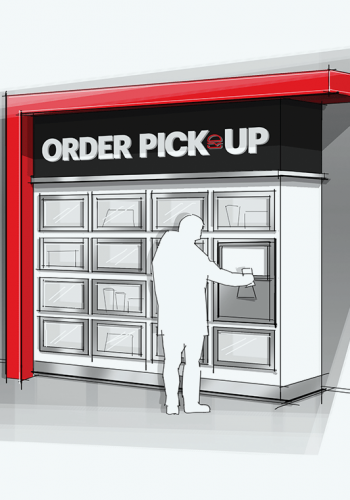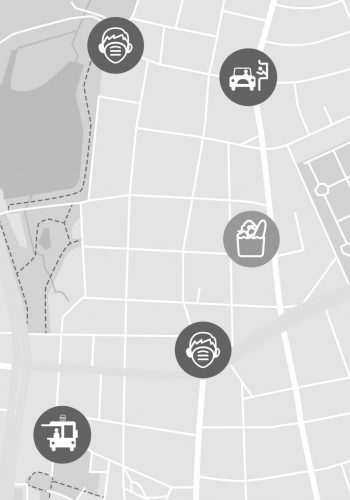Retail: A Post COVID-19 Reality.

COVID-19 is impacting everyone – but retailers are among those most heavily affected. Even as the country is beginning to reopen, consumers are cautious about leaving their homes. As people begin to venture out for non-essential activities, they will expect measures to be taken by retailers that give them control over their personal space.
To consider how retailers and brands might best adapt to the changing environment, and consumer’s changing needs, we focused on four behavior shifts and used insights from our recent consumer research to discover ways to address retail in a post-pandemic world.
With the effects of Contact Avoidance, Protecting Personal Space, Confidence-based Loyalty, and Staying Virtual in mind, we explored a variety of solutions that could be used as retailers begin to reimagine in-store experience and the consumer journey.
Retailers need to replace temporary fixes with permanent solutions around safety and sanitation and consumers expect a safe, easier, and faster experience – from arrival through to check-out.
Important updates to the front of store will likely include separate, designated entry and exit points, UV light sanitization for disinfecting products, hands-free product scanning to reduce physical contact, and real-time data on store occupancy and peak times.
Retailers need to design solution solutions for new traffic patterns and navigation in-store, acknowledging that consumers will want to complete their shopping missions with minimal interaction.
Our reimagination of the in-store journey includes an interactive app with store map and product scanning, directional wayfinding via lighting, clear one-way traffic flow, and separate, designated entry and exit points.
Retailers need the operations and labor to meet increased demand of BOPIS (buy online pick up in-store) while also addressing that consumers are wary of picking up in-store but are becoming more accustomed to picking up onsite (BOPOS) instead.
To optimize BOPOS, our reimagined store features curbside parking with adjacent impulse opportunities in addition to digital window shopping.
Retailers need to reignite browsing behaviors that drive impulse purchases and increase basket size, while consumers want to have control over their personal shopping experience.
When reimagining the future of browsing, stores will want to consider creating a front-of-house showroom with mobile scanning and smart fitting rooms, using appointment-based reservations and fittings, and having an expanded back-of-house area. Other future-thinking ideas include creating a virtual shopping environment with personal avatars, AI assistance, and real-time store inventory, having interactions with a personal assistant through mobile apps, and the creation of a multi-brand “mobile mall” that allows for impulse shopping, easy deliveries, and easy returns.
As consumers begin to re-enter retail, are you prepared for what’s ahead?
Contact us to help you reimagine what comes next.


